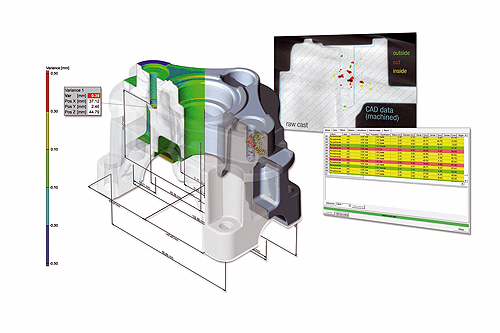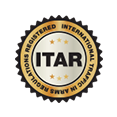
Due to the tremendous quality and efficiency benefits associated with the use of industrial computed tomography (CT) for non-destructive failure and structure analysis and 3D metrology for measurement of internal part geometries, demand for the technology is quickly growing. To meet this growing demand, GE Measurement & Control just launched its phoenix datos|x 2.3 next- generation CT software, applicable for use with most industrial CT systems offered by GE Measurement & Control’s Inspection Technologies division. The software comes with new highlights like a specific production mode for fully automated CT data acquisition, reconstruction and evaluation and supports high precision 3D measurements following VDI 2630 guidelines.

Industrial CT offers both: quantitative 3D failure analysis as well as precise coordinate measurement and nom./ act. comparison for production control and optimization.
Automated high throughput production mode
The phoenix datos|x software with the new one-button-CT production mode automates the entire CT process chain from scan to final evaluation report. This new advancement allows 3D metrology and failure analysis to be performed significantly faster and more consistently. With the production-oriented CT workflow, the operator can easily identify a part with a barcode reader, place it on the rotation table, press the CT start button and verify CT evaluation results.
System control functions such as detector calibration or tube conditioning run totally independent from operator influence in the background. The new datos|x software also includes system performance monitoring procedures that follow ASTM 1695 guidelines. Minimising operator time and influence and improving part throughput and evaluation result repeatability helps raise productivity in industrial production.

Optimized throughput and reliability of CT results at minimized operator time and influence: the new one-button |CT functionality of GE’s phoenix datos|x CT software.
Reliable precision 3D metrology
The datos|x software also introduces a new metrology package option for highly precise and reproducible 3D metrology. It offers reliable, precise 3D measurements for nominal/actual CAD comparison, wall thickness analysis and efficient tool correction tasks. In contrast to conventional tactile coordinate measurement techniques, a CT scan acquires all surface points of an even complex object simultaneously. This includes all hidden features like undercuts, which are not accessible using other non-destructive measurement methods. The measurement accuracy refers to the VDI 2630 guideline for applying CT in dimensional measurement, which was first implemented in GE’s phoenix v|tome|x m CT system.
Supported by datos|x 2.3 software, a specific metrology, edition of the versatile CT scanner, phoenix v|tome|x m is now GE’s first industrial CT system to feature precision CT measurements. This edition includes temperature stabilization of the enclosure, a high power 300 kV/500 W microfocus X-ray tube and the 4 megapixels high performance 400 x 400 mm DXR digital detector.
Additionally, it comes with a direct measurement system for all linear axes, test phantoms for validation and performance tests, and highly automated procedures for axis, system and voxel calibration. The phoenix v|tome|x m metrology edition can be verified to an accuracy specification of 4+L/100 μm referring to VDI 2630-1.3 guideline. Due in part to faster scanning, reconstruction and evaluation capabilities, examination reports can be automatically generated in less than one hour, ensuring a high sample throughput.
“GE‘s customers now benefit from both advantages of industrial CT, combining 3D metrology and inspection within one CT scan,” highlighted Dr. Oliver Brunke, lead CT product manager for the GE Inspection Technologies product line. “By providing more efficient 3D production process control, GE brings CT solutions from the R&D and quality labs directly to the production floor, helping to increase quality as well as productivity.”

GE’s new datos|x CT software offers initiating CT scans and evaluations of identified parts just by pressing one button.





